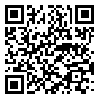BibTeX | RIS | EndNote | Medlars | ProCite | Reference Manager | RefWorks
Send citation to:
URL: http://umj.umsu.ac.ir/article-1-2790-en.html
Background & Aims: Scratching the enamel surface during orthodontic bracket debonding and removal of adhesive remnants is a common concern for orthodontists. This study sought to assess the enamel surface roughness following the use of low speed tungsten carbide (TCB) and high-speed Arkansas burs (AB).
Materials & Methods: This in-vitro experimental study was performed on 72 first and second premolar teeth extracted for orthodontic purposes. Labial surfaces of the teeth were etched and brackets were bonded using light-cure composite resin. After 24 hours, orthodontic brackets were debonded by holding them from the mesial and distal and peeling the bracket base away from the tooth using a debonding fine cutter in order to minimize the trauma to the enamel. The teeth were then randomly divided into two groups of 36. The composite remnants were removed using a 12-blade TCB and low speed hand piece in group 1 and AB and high-speed hand piece in group 2. The enamel surface roughness of specimens was evaluated under a stereomicroscope using the surface roughness index described by Howell and Weeks. The time required for complete adhesive removal from the enamel surface was recorded in seconds. The data were analyzed using non-parametric chi square test.
Results: In both TCB and AB groups, the enamel surface roughness significantly increased compared to the baseline value (P=0.001 for TCB and P=0.004 for AB). No significant difference was found in surface roughness between the two groups after the intervention (P=0.431). The time spent for complete removal of remnants was significantly shorter with AB compared to TCB (P=0.00).
Conclusion: Considering the same level of surface roughness caused by AB and TCB and faster removal AB, AB is recommended for composite remnant removal. However, further studies are required in this respect.
| Rights and permissions | |
 |
This work is licensed under a Creative Commons Attribution-NonCommercial 4.0 International License. |





